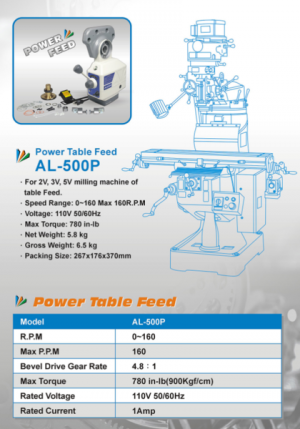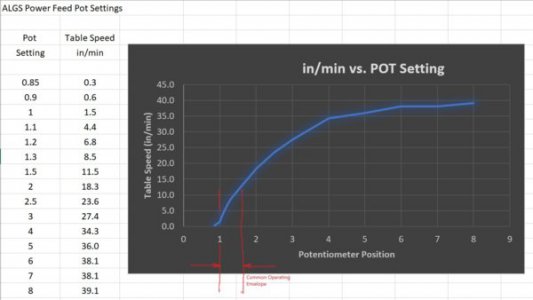The X axis Align AL-500P on my knee mill (3 Hp) will go down 0.5 IPM and the speed pot goes all the way down to zero in a linear fashion. Not a lot of power at that low a feed rate, but easily set. Most of the time I am using feeds in the 6-12 IPM, sometimes higher for aluminum. Rarely when I want a mirror finish using a larger cutter head maybe go down to 4 IPM. Steel alloys, I have probably gone slower, lots of factors. I do not recall needing anything in the 0.5 IPM range. Inserts specify SFM and In/tooth for different metals, also need to factor in the DOC, so one can do basic calculations for a speed and feed range. The usual insert feed range for steel and SS is something like 0.003-0.008 In/tooth. End mills also give ranges like 0.001-0.003 for HSS, but say you are using a 1/4" end mill, you are limited by the maximum speed of your mill for say aluminum, but probably not for steel. You can do some calculations off of the attached table. The low end of the feed rate I calculate out to something like 1 IPM for some high tensile alloys, faster IPM if carbide tooling or using inserts. I am very happy with my Align power feeds, seem to have plenty of power and they are nicely made. These days, they probably would be my first drive recommendation unless you have money to burn for the Servo drives.



